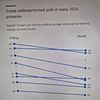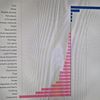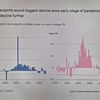5.7.2011 | 19:58
Moody's fellir Portúgal í rusl!
Þetta er glæný frétt sem fer nú hamförum á helstu fréttavefjum. Fyrstu viðbrögð markaða þegar komin fram, þ.e. Evran sem hefur verið í hækkunarferli gegn dollar síðan sl. helgi, féll aftur til baka gegn dollar. Svona virðist dollar og evra jó-jóa eftir því, hvort erfiðleikar í Bandar. eða Evrópu, eru meir áberandi í fréttum þá stundina.
Wall Street Journal - Moody's Downgrades Portugal to 'Junk'
Bloomberg - Euro Extends Decline Versus Greenback After Moody’s Cuts Portugal to Junk
Bloomberg - Portugal Ratings Cut to Junk by Moody’s
Bloomberg - Euro Weakens as Moody's Cuts Portugal's Credit Rating; Yen Recoups
Reuters - Moody's downgrades Portugal
Eins og ég skil áhyggjur Moodie's manna, þá einfaldlega óttast þeir að eins og var reyndin með Grikkland, þá takist ekki að fylgja niðurskurðar og kostnaðarlækkunarprógrammi fram, að því marki sem ráð er fyrir gert.
- Þannig að eins og kom í ljós þetta sumar, höfðu ekki áætlaðar aðgerðir verið framkvæmdar nema að hluta.
Síðan óttast þeir, eins og reynslan hefur verið með Grikkland fram að þessu, að samdráttur landsframleiðslu reynist meiri en fyrirfram var ráð fyrir gert, og það einnig grafi undan prógramminu.
Að lokum, virðist þetta prógramm vera uppsett eins og hin fyrri, þ.e. prógrammið er undirfjármagnað - gert er ráð fyrir að ríkið fari á markað til að sækja sér pening.
Í tilviki Portúgals eins og fram kemur, er það 2013 eða ári seinna, en ætlast var til að Grikkland myndi sækja sér frekari fjármögnun á markaði fyrir skuldabréf.
Moodie's óttast sem sagt, endurtekningu að í ljós komi að Portúgal muni ekki geta sókt sér fé á markað, og þurfi því frekari björgun.
---------------------------------------------------Moody's
The following drivers prompted Moody’s decision to downgrade and assign a negative outlook:
1. The growing risk that Portugal will require a second round of official financing before it can return to the private market, and the increasing possibility that private sector creditor participation will be required as a pre-condition.
2. Heightened concerns that Portugal will not be able to fully achieve the deficit reduction and debt stabilisation targets set out in its loan agreement with the European Union (EU) and International Monetary Fund (IMF) due to the formidable challenges the country is facing in reducing spending, increasing tax compliance, achieving economic growth and supporting the banking system.
RATINGS RATIONALE
The first driver informing today’s downgrade of Portugal’s sovereign rating is the increasing probability that Portugal will not be able to borrow at sustainable rates in the capital markets in the second half of
2013 and for some time thereafter. Such a scenario would necessitate further rounds of official financing, and this may require the participation of existing investors in proportion to the size of their holdings of debt that will become due.
Moody’s notes that European policymakers have grown increasingly concerned about the shifting of Greek debt held by private investors onto the balance sheets of the official sector. Should a Greek restructuring become necessary at some future date, a shift from private to public financing would imply that an increasingly large share of the cost would need to be borne by public sector creditors. To offset this risk, some policymakers have proposed that private sector participation should be a precondition for additional rounds of official lending to Greece.
Although Portugal’s Ba2 rating indicates a much lower risk of restructuring than Greece’s Caa1 rating, the EU’s evolving approach to providing official support is an important factor for Portugal because it implies a rising risk that private sector participation could become a precondition for additional rounds of official lending to Portugal in the future as well. This development is significant not only because it increases the economic risks facing current investors, but also because it may discourage new private sector lending going forward and reduce the likelihood that Portugal will soon be able to regain market access on sustainable terms.
The second driver of today’s rating action is Moody’s concern that Portugal will not achieve the deficit reduction target — to 3% by 2013 from 9.1% last year as projected in the EU-IMF programme — due to the formidable challenges the country is facing in reducing spending, increasing tax compliance, achieving economic growth and supporting the banking system. As a result, the country may be unable to stabilise its debt/GDP ratio by 2013. Specifically, Moody’s is concerned about the following sources of risk to the budget deficit projections:
1) The government’s plans to restrain its spending may prove difficult to implement in full in sectors such as healthcare, state-owned enterprises and regional and local governments.
2) The government’s plans to improve tax compliance (and, hence, generate the projected additional revenues) within the timeframe of the loan programme and, in combination with the factor above, may hinder the authorities’ ability to reduce the budget deficit as targeted.
3) Economic growth may turn out to be weaker than expected, which would compromise the government’s deficit reduction targets. Moreover, the anticipated fiscal consolidation and bank deleveraging would further exacerbate this. Consensus growth forecasts for the country have been revised downwards following the EU/IMF loan agreement. Even after these downward revisions, Moody’s believes the risks to economic growth remain skewed to the downside.
4) There is a non-negligible possibility that Portugal’s banking sector will require support beyond what is currently envisaged in the EU/IMF loan agreement. Any capital infusion into the banking system from the government would add additional debt to its balance sheet.
Moody’s acknowledges that its earlier concerns about political uncertainty within Portugal itself have been largely resolved. Portugal’s national elections on 5 June led to the formation of a viable government, both components of which had campaigned on the basis of supporting the EU-IMF loan agreement negotiated by the previous government. Moody’s also acknowledges the policy initiatives announced at the end of June demonstrate the new Portuguese government’s commitment to the programme.
However, the downside risks (as detailed above) are such that Moody’s now considers the government long-term bond rating to be more appropriately positioned at Ba2. The negative outlook reflects the implementation risks associated with the government’s ambitious plans.
WHAT COULD CHANGE THE RATING UP/DOWN
Developments that could stabilise the outlook or lead to an upgrade would be a reduction in the likelihood that private sector participation might be required as precondition for future rounds of official support or evidence that Portugal is likely to achieve or exceed its deficit reduction targets.
A further downgrade could be triggered by a significant slippage in the execution of the government’s fiscal consolidation programme, a further downward revision of the country’s economic growth prospects or an increased risk that further support requires private sector participation.
-----------------------------------------Moody's
Niðurstaða
Ég held að áhyggjur Moodie's manna séu algerlega réttmætar. En, ef þeir óttast um það hvort Portúgal komist á markað 2013. Hvað þá með Írland sem enn er ráðgert eins og var reyndin með Grikkland, að muni sækja sér fé á næsta ári.
En, ég stórefa að Írar muni ná því í ljósi mjög hárrar vaxtakröfu sbr. 10 ára bréf á bilinu milli 10-11%.
Þetta mál reikna ég með að gjósi upp á næstu vikum eða mánuðum.
-------------------------
Síðan má ekki gleyma snilldinni, að nýtt björgunarplan Grikklands hefur nú endurskoðun á 3. mánaða fresti þ.e. næst í september nk. Þá má í hvert sinn reikna með nýju drama þ.e. - fær Grikkland peninginn greiddann út eða verður það greiðsluþrota?
Svona skemmtileg stöðug spenna sem er framundan, sérdeilis í ljósi þess hve óskaplega krefjandi það er, en Grikkland þarf að spara cirka heil fjárlög af útgjöldum næstu 3. árin.
Kv.
Meginflokkur: Stjórnmál og samfélag | Aukaflokkur: Sveitarstjórnarkosningar | Breytt 6.7.2011 kl. 10:54 | Facebook
Um bloggið
Einar Björn Bjarnason
Nýjustu færslur
- Ég er eindregið þeirrar skoðunar - Ísrael geti ekki unnið str...
- Trump, hefur viðurkennt að geta ekki greitt - 464 milljón dol...
- Skoðanakannanir líklega ofmeta fylgi Donalds Trumps -- sem er...
- 2 ár síðan Rússland hóf innrás í Úkraínu, febr. 2022: Stríðið...
- Batnandi efnahagur Bandaríkjanna gæti bætt sigurlíkur Joe Bid...
- Hæstiréttur Bandaríkjanna, varðandi mál Donalds Trumps - ætti...
- Arabaríki leggja fram friðartillögu í átökum Ísraels og Hamas...
- Yfirlit yfir stöðuna í Úkraínu: Stuttu máli sagt, gekk sókn Ú...
- Vegna mikillar umræðu um, vinsældir Donalds Trump vs. óvinsæl...
- Harðir bardagar sl. 3 vikur um borgina Avdiivka í SA-Úkraínu,...
- Er Ísrael að falla í gildru Hamas Samtakanna? Hamas samtökin ...
- Árás Hamas samtakanna frá Gaza svæðinu á Ísrael - stærsta bló...
- Staðfest gegnumbrot Úkraínmanna, á Varnarlínu Rússar No. 2 --...
- Hafa Úkraínumenn, þegar 'de facto' haft sigur á Rússum í S-Úk...
- Nýleg könnun í Bandaríkjunum - sýnir, dómsmálin ógna möguleik...
Eldri færslur
2024
2023
2022
2021
2020
2019
2018
2017
2016
2015
2014
2013
2012
2011
2010
2009
2008
Bloggvinir
-
 eyglohardar
eyglohardar
-
 bjornbjarnason
bjornbjarnason
-
 ekg
ekg
-
 bjarnihardar
bjarnihardar
-
 helgasigrun
helgasigrun
-
 hlini
hlini
-
 neytendatalsmadur
neytendatalsmadur
-
 bogason
bogason
-
 hallasigny
hallasigny
-
 ludvikjuliusson
ludvikjuliusson
-
 gvald
gvald
-
 thorsteinnhelgi
thorsteinnhelgi
-
 thorgud
thorgud
-
 smalinn
smalinn
-
 addabogga
addabogga
-
 agnarbragi
agnarbragi
-
 annabjorghjartardottir
annabjorghjartardottir
-
 annamargretb
annamargretb
-
 arnarholm
arnarholm
-
 arnorbld
arnorbld
-
 axelthor
axelthor
-
 arnith2
arnith2
-
 thjodarsalin
thjodarsalin
-
 formosus
formosus
-
 birgitta
birgitta
-
 bjarnijonsson
bjarnijonsson
-
 bjarnimax
bjarnimax
-
 westurfari
westurfari
-
 virtualdori
virtualdori
-
 bookiceland
bookiceland
-
 gattin
gattin
-
 davpal
davpal
-
 dingli
dingli
-
 doggpals
doggpals
-
 egill
egill
-
 jari
jari
-
 einarborgari
einarborgari
-
 einarsmaeli
einarsmaeli
-
 erlaei
erlaei
-
 ea
ea
-
 fannarh
fannarh
-
 fhg
fhg
-
 lillo
lillo
-
 gesturgudjonsson
gesturgudjonsson
-
 gillimann
gillimann
-
 bofs
bofs
-
 mummij
mummij
-
 kallisnae
kallisnae
-
 gp
gp
-
 gudmbjo
gudmbjo
-
 hreinn23
hreinn23
-
 gudrunmagnea
gudrunmagnea
-
 gmaria
gmaria
-
 topplistinn
topplistinn
-
 skulablogg
skulablogg
-
 gustafskulason
gustafskulason
-
 hallurmagg
hallurmagg
-
 haddi9001
haddi9001
-
 harhar33
harhar33
-
 hl
hl
-
 diva73
diva73
-
 himmalingur
himmalingur
-
 hjaltisig
hjaltisig
-
 keli
keli
-
 fun
fun
-
 johanneliasson
johanneliasson
-
 jonsullenberger
jonsullenberger
-
 rabelai
rabelai
-
 jonl
jonl
-
 jonmagnusson
jonmagnusson
-
 jonvalurjensson
jonvalurjensson
-
 gudspekifelagid
gudspekifelagid
-
 thjodarskutan
thjodarskutan
-
 juliusbearsson
juliusbearsson
-
 ksh
ksh
-
 kristbjorg
kristbjorg
-
 kristinnp
kristinnp
-
 larahanna
larahanna
-
 leifurbjorn
leifurbjorn
-
 lifsrettur
lifsrettur
-
 wonderwoman
wonderwoman
-
 maggij
maggij
-
 elvira
elvira
-
 olafureliasson
olafureliasson
-
 olinathorv
olinathorv
-
 omarragnarsson
omarragnarsson
-
 ottarfelix
ottarfelix
-
 rafng
rafng
-
 raksig
raksig
-
 redlion
redlion
-
 salvor
salvor
-
 samstada-thjodar
samstada-thjodar
-
 fullvalda
fullvalda
-
 fullveldi
fullveldi
-
 logos
logos
-
 duddi9
duddi9
-
 sigingi
sigingi
-
 sjonsson
sjonsson
-
 sigurjons
sigurjons
-
 stjornlagathing
stjornlagathing
-
 athena
athena
-
 stefanbogi
stefanbogi
-
 lehamzdr
lehamzdr
-
 summi
summi
-
 tibsen
tibsen
-
 vala
vala
-
 valdimarjohannesson
valdimarjohannesson
-
 valgeirskagfjord
valgeirskagfjord
-
 vest1
vest1
-
 vignir-ari
vignir-ari
-
 vilhjalmurarnason
vilhjalmurarnason
-
 villidenni
villidenni
-
 thjodarheidur
thjodarheidur
-
 valli57
valli57
-
 tbs
tbs
-
 thorgunnl
thorgunnl
-
 thorsaari
thorsaari
-
 iceberg
iceberg
Heimsóknir
Flettingar
- Í dag (19.4.): 1
- Sl. sólarhring: 6
- Sl. viku: 758
- Frá upphafi: 846639
Annað
- Innlit í dag: 1
- Innlit sl. viku: 694
- Gestir í dag: 1
- IP-tölur í dag: 1
Uppfært á 3 mín. fresti.
Skýringar




Athugasemdir
Að mínum dómi er þetta aðeins byrjunin á því að löndin á evrusvæðinu, fyrir utan Þýskaland og Frakkland, verði sett í "ruslflokk".
Jóhann Elíasson, 6.7.2011 kl. 08:29
Ekki öll löndin, þar sem nokkur eru eða virðast höndla að búa með þýskalandi innan Evrunnar.
En, Ítalía og Spánn geta verið í hættu - sbr. að þar mældist samdráttur í iðnframleiðslu í júní, undanfarna 2 mánuði hefur verið að hægja á hagvexti í iðnríkjum vesturlanda. Ef ofan í þetta þann 7/7 Seðlabanki Evrópu hækkar vexti - sem flestir fræðingar telja líklegra en ekki, ef hann að auki heldur áfram vaxtahækknunarferli en þetta væri hækkun nr. 2; þá koma þessi 2. ríki undir viðbótar þrýsing.
En gengi Evru þá sennilega hækkar við það að vextir fara upp á Evrusvæði en haldast mjög lágir í Bandar., Japan og Bretl; sem væri slæmt fyrir útflutning þessara landa. Að auki, að hærri vextir hækka fjármagnskostnað bæði innan landanna sjálfra þ.s. mörg fyrirtæki og einstaklingar margir hverjir skulda mikið þannig að vextirnir einnig geta verið verulega samdráttaraukandi fyrir þau.
Þetta gæti dugað til að íta þeim alveg yfir í samdrátt á ný, og ef svo - þá má vænta þess að spekúlantar fari að veðja gegn þeim á mörkuðum fyrir alvöru.
Ítalía skuldar um 1.800ma.€ eða liðlega 2-falt þ.s. Spánn skuldar. Til samanburðar, skuldar Grikkland enn innan við 400ma.€ þó svo að með viðbótar lánveitingum fari þeirra skuldir upp í þá upphæð. Einungis Þýskaland skuldar hærri upphæð, en þeirra hagkerfi er greiðslufært meðan að greiðslustaða Ítalíu er alveg á ysta jarði þess sem er sjálfbært og þarf mjög lítið til að sveiflist yfir í ósjálfbært ástand, en nýtt samdráttarskeið er dæmi um það sem Ítalía myndi ekki þola.
Kv.
Einar Björn Bjarnason, 6.7.2011 kl. 10:53
Bæta við athugasemd [Innskráning]
Þú ert innskráð(ur) sem .
Innskráning